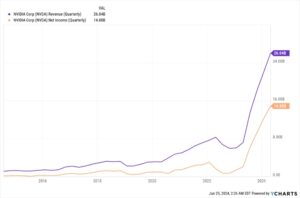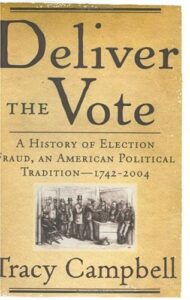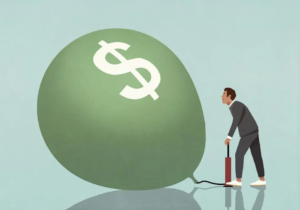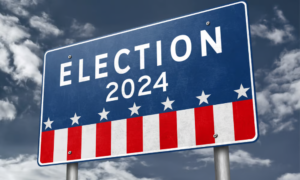Search results
52 results found.
 MarkFord.net
MarkFord.net
The open-for-inspection half-way home for my writing…
52 results found.

K and I were in the Big Apple this past week. And our time there was full of surprises.
The streets and avenues of midtown and downtown were relatively clean, and the sidewalks were crowded. The mood was vibrant, even upbeat. And the crazies – the drug-addled and lunatic homeless population – were more weirdly entertaining than scary.
The shops and restaurants were either full or half-full, and people were buying. Whether the dollars they were spending were the last they had of all the various government handouts or from wages or profits taken from stock accounts, I couldn’t tell. But the economic gestalt of at least those parts of the city felt remarkably healthy.
These are, of course, the parts of the city least likely to be suffering right now from our floundering (foundering?) economy, and the most likely to be feeling exuberant over the strength of the stock market. But still…
Worth Booking
K booked us into the recently opened Fifth Avenue Hotel. Our pied-à-terre for the week, a standard guest room (about 250 square feet) with a king-sized bed, cost a thousand a night with an American Express Black Card discount.
K likes trying out new hotels, and she had, as always, researched this one carefully. The reviews, she told me, from both critics and guests, were uniformly excellent. “They better have been,” I thought.
Located on Park Avenue and 28th Street, it is walking distance from Madison Square Park, a few steps from the High Line, and a short cab ride to the theater district.

The interior is spacious, elegant, and features an excellent restaurant and bar that require reservations, even for guests, because of their well-deserved reputations. The décor – in both the public areas and the guest rooms (we saw three) – is tasteful and luxurious.

Most impressive, however, is the service. Every employee with whom we interacted, from the receptionists to the concierges to the butlers to the servers and even the housekeepers, was efficient, capable, and responsive. And they always sported a cheerful and helpful demeanor. In New York City! One can expect excellent service in any first-class hotel in NYC… but genuine smiles?
We were in the city to see our NYC friends, to visit some of our favorite museums, to walk in our favorite parks, and to attend a performance at the Shubert Theatre of Water for Elephants, a musical that’s been selling out since day one.
That was a special treat because the leading lady, Isabelle McCalla, happens to be our niece, the daughter of my sister JF and her husband SM.
Worth Seeing

The show was very good. And Izzy was great – her third lead role in a Broadway show! I am so proud of her. During the intermission and afterwards at the stage door, I found myself initiating casual conversations with the ticket holders around me and mentioning, very humbly, that I was the leading lady’s uncle.
Although she didn’t do any dance solos in Water for Elephants, Izzy danced like the seasoned pro she is. As a child, she was privileged when it came to dancing. Her parents were for many years the lead dance couple for the American Ballroom Theater and taught ballroom dancing thereafter. Izzy began her training when she was in third grade.
Her acting was very good, too. Much better than it was the first time I saw her act when she was an undergrad at the U of Michigan drama school in 2015. Not surprising, because Izzy was always focused and determined to get better at anything she did.

What did surprise me about her performance in Water for Elephants was her singing.
I’ve seen her sing at least a half-dozen times since that first time nine years ago – and each time, I thought I could detect an improvement. I noticed an improvement when she sang as Jasmine in Aladdin, as Alyssa in The Prom, and a noticeable improvement when she played Maizy in Shucks.
In Water for Elephants, she brought her voice to an even higher level. She had, I think, three solos and two duets. In each, her singing ranged from excellent to mesmerizing.
Normally, at this point in an essay like this, I’d stop to provide a “takeaway” – some pragmatic observation or useful suggestion that the reader could benefit from. Well, there isn’t one. This is simply a bald-faced brag.
But in writing it, there was a takeaway for me…
It has always seemed obvious to me that while many skills can be greatly improved through practice – conscious practice – there are some for which achievement is limited by one’s DNA. You have it or you don’t. An aptitude for math, for example, is one of them. Singing is another. But Izzy’s progress made me realize that even a skill as “inborn” as the ability to sing well can be, with time and persistence, mastered.
I wish I knew that when I was younger.
Click here to watch Izzy and her costar, Grant Gustin, performing “Wild” from Water for Elephants.
Why I’m Moving to a Monthly Format

If you read the Aug. 28 issue, you know that this is the last of my weekly posts. Several readers wanted to know why I’m making the change.
Here’s one big reason…
Until COVID-19 hit, I didn’t write much about current events. I knew that the news media had biases. But I thought they were mostly about politics and that those biases were easy to spot and, therefore, largely inoffensive. And on subjects other than politics, I figured they were mostly trustworthy.
I felt the same way about the larger social media platforms. And I had equal or greater trust in the government agencies that were charged with researching and informing the public about public health issues (WHO, the NIH, and the CDC).
But in early 2000, I began to notice that the numbers I was hearing and reading about COVID in the news didn’t add up.
Literally.
You didn’t need to be a virologist to notice the discrepancies You needed only a grammar school education in arithmetic.
The early estimates of the lethality rate of the virus, for example, ranged from 12% to 15%. If true, and if the virus was also as contagious as the media were reporting, we were looking at perhaps the deadliest pandemic in history, with a death count not in the talked-about millions, but in the billions.
Two variables alone – the fact that the virus was killing mostly the older and the obese, and the fact that a significant percentage of people who had tested positive were either asymptomatic or had only minor symptoms – made it arithmetically impossible to believe the official numbers.
Yet everyone seemed to accept those numbers as scientific facts, and the media passed them along to the public uncritically.
I was flummoxed. Was I the only one that noticed?
I decided to write about it. And, thus, the purpose of my first essay on COVID was not to inform my readers that they were being fed false information, but to explain my thinking and show them my arithmetic. I did the same in conversations with friends and neighbors. I asked. And I kept asking. But I got only two responses: polite silence or laughter.
This prompted me to double down on my research. I began with how and where the infection started. China and the WHO had issued a report stating that the cause was zoonotic – i.e., passed to humans from an infected animal at an outdoor fish market on December 31, 2019 in Wuhan, China. This was accepted by the CDC and passed along to Americans by Dr. Fauci, as head of the CDC.
Soon thereafter, letters and articles were being published in health and science journals arguing that the DNA of the virus could not have been zoonotic and might have come from a leak at a US-funded laboratory in Wuhan.
I read both sides of the argument but decided that I didn’t have the knowledge to go with one or the other.
In the ensuing weeks, the WHO, Dr. Fauci, and some of his colleagues at the CDC (and I think at the NIH) launched a harsh attack on proponents of the “lab leak” theory, accusing them of being anti-science and engaging in dangerous “misinformation” and “conspiracy theories.”
“What difference does the origin of the virus make?” I wondered. “What matters is how to stop or control it.”
But the campaign continued and deepened. Before long, anything published in support of the lab leak theory was being cancelled. Then several of the scientists and doctors who argued in favor of it were publicly condemned, sanctioned by their medical associations, and in some cases had their licenses revoked.
Today, everyone accepts the lab leak theory as the one that is most likely to be true. Even the CDC. And yet, I’ll bet if I asked 10 people that get their information from CNN and the NYT, at least six of them would still call it a “conspiracy.”
At the same time as I was researching the origins of the virus, I continued to study and write about the fatality rate. And over the years that have passed since I first put forward my guesses, the official lethality count was gradually lowered. But it took nearly four years for the WHO, the CDC, and the NIH to get honest with the public and begin publishing the real numbers.
I had the same experience with questions about the utility of social distancing and masks and the government shutdown of the economy. In every instance, the “findings” coming from government health agencies and the narratives promoted by mainstream media seemed, according to the facts I was discovering, less and less probable.
Eventually, I became a full-fledged disbeliever in anything the “official” sources had to say about COVID. And that led me to mistrust what my government was telling me about all the controversies during that time – from the earlier reports that Russia had interfered with the 2016 presidential election, to the accusation that Trump was “colluding” with Russia during his term of office, to the “facts” publicized following the BLM protests and riots, to the more recent controversies about the Russia/Ukraine and Israel/Hamas wars.
In almost every case, I found numbers that didn’t add up, or logic that was fallacious, or stories that had been fabricated, or facts that were not facts, and very little common sense applied.
I was drawn into these controversies. And when my essays on them were criticized, I was drawn in even deeper to prove my arguments.
It was intense. And intellectually and emotionally exhausting. Moreover, the research was taking up an increasingly bigger proportion of my working day. And so, about a month ago, when I woke up one morning still tired from working till the wee hours to finish another one of those essays, I decided enough was enough. There were plenty of other writers producing arguments on my side of the stories.
I realized that if I could free myself of what had turned into an obsession – if I could step away from researching and writing about current events and political issues – I would be able to free up at least 20 hours a week that I could devote to finishing some of my 18 half-written books.
I didn’t want to stop writing my blog altogether – but I didn’t have to post an issue twice a week. I could do a longer issue once a month. And I would still have time to fulfill my obligation to write several syndicated essays each month for large-circulation e-zines.
So, that is the thinking behind my decision to make this my last weekly issue. When you get to the Postscript at the end, you’ll see what I’m planning for the new monthly issue.

Chart of the Week: It’s Up! It’s Down! What’s Going on with Nvidia?
Thanks to my broker Dominick’s recommendation, I was an early investor in Nvidia, and profited very handsomely from it.
From the start, there was all sorts of hype about the company, which Dominick and I discussed several times during our monthly meetings. The result was that we gradually lowered my position size by pocketing a lot of the profits and reinvesting them elsewhere.
Recently, there’s been another public conversation about Nvidia, with some pundits very bullish on it and some quite skeptical.
Last week, I sent an email to both Dominick and Sean, asking them how they see the future of the company and its share price. Their perspectives were largely similar, which gave me some comfort.
Below is what Sean had to say. – MF
I received Mark’s message about Nvidia at the same moment – literally – that I was finishing a column comparing Nvidia’s and Broadcom’s rise in recent years to Cisco and Qualcomm in the year 2000.
Even if Nvidia has not reached the same insane, anoxic heights of Cisco’s valuation…
The parallels do provide an interesting glimpse into the nature of bubbles and the allure of stocks caught up in a wave of legitimate but extreme exuberance.
Because I do believe that, like the internet in 2000, AI and machine learning services for consumers and businesses is very much the future.
Just as early adopters of the internet created webpages that sent many designers to an early grave…
AI image generators now produce portraits of people that sometimes look like an uncanny tangle of knuckles.
But we can certainly imagine a future when AI writes or generates images that feel more… usable, and not merely a novelty.
And that’s why people are excited about Nvidia. Or, at least, Nvidia’s chip architecture and CUDA platform.
You see, Nvidia makes chips that are quite good at doing lots of linear algebra, calculus, and matrix multiplication very fast – which is all a neural net AI algorithm is, really.
This proved exceptionally useful for calculating vectors in video game graphics, and then running hashing algorithms on block data to mine cryptocurrencies, and then molecular modeling simulations, and then doing machine learning on very big datasets necessary for modern AI algorithms.
The “edge” that Nvidia’s chips possess is their ability to break complex tasks into thousands of smaller operations that can be worked on in parallel.
This is the main reason why I recommended buying Nvidia in June 2022, after it had fallen about -50% in a few months.
But with the explosion of AI, Nvidia’s prospects look nothing shy of extraordinary.
Sources say it took about 10,000 Nvidia A100 GPU processors to train OpenAI’s GPT-3 model.
Nvidia’s A100 chips cost about $10,000 each.
And that’s just one of many AI applications that Nvidia’s chips are being used for.
Do some quick multiplication, and you can see why Nvidia’s revenue and profit in recent years looks like a scythe.

But that, alone, would not justify Nvidia’s insane valuations at the moment.
For that, investors would need to see further growth. Accelerated growth. Sustainable growth.
So here’s why some investors think this growth will continue for years to come:
There are about 10,300 data centers in the world as I write this. By 2030, it’s estimated that we’ll have 2 to 4 times as many.
A medium-size data center can hold about 50 to 100 server racks, while a very large one can hold 5,000 or more.
A standard rack can hold 40 to 50 server computers.
Each server computer can hold up to 10 GPUs or more. (Really, cooling and power are the limiting factors there. So innovations might increase this number.)
Future AI models with more data and more parameters may require 30,000 training GPUs or more to train in a reasonable amount of time.
And while the A100s cost $10,000, Nvidia’s new Blackwell chips will cost $30,000 to $40,000 each.
Once you start multiplying these numbers together… we’re suddenly talking about the potential for trillions of dollars of revenue in the coming years and decades.
If you make some very charitable assumptions, find the net present value of all that future revenue, carry the one, drop some acid, and delude yourself into believing that exponential growth is a real thing…
You can start to imagine why an investor, especially an inexperienced or excessively optimistic investor, might look at Nvidia’s valuations as “fair” or “reasonable.”
So if you want to know why folks have been bidding up the price of this stock… That’s why.
Clearly, I like the stock and have recommended it before. I think they make a great product. And they have amazing future prospects.
But there are a whole host of reasons why I don’t think this will necessarily translate into a whole lot more stock price growth from here.
Let’s start with the most basic facts…
Nvidia was the top play for all these high-tech digital applications, like AI and machine learning, because it controlled a vast majority of the market share for GPUs and TPUs.
For that reason, it commanded a lot of the revenue of this market… up to this point.
But Google and Meta are working with Nvidia’s competitor, Broadcom, to develop their own AI chips in house.
Intel is rolling out its Gaudi 3 AI accelerator chip, which is both cheaper and consumes less power. AMD is launching its MI300 AI accelerator chip, which is being adopted by Meta, OpenAI, and Microsoft.
“The move signals a notable shift among tech companies seeking alternatives to Nvidia’s costly graphics processors,” a reporter for TechWire writes.
Also, there’s a huge presupposition right now that AI tools will continue to be hosted in datacenters, on the cloud. But because AI is so computationally intensive, the cost of – for example – one query in ChatGPT costs 10 times as much as a Google search.
To put that another way, each word generated on ChatGPT costs $0.0003.
So companies like Qualcomm are working on small systems-on-a-chip that have mini-versions of AI models that can fit on individual devices, handling some AI tasks without having to take on the expense of sending data to a data center.
To put it bluntly: Even if Nvidia has the most dominant chips and the largest market share, it has heavy competition on the way, and its customers actively wish to stop paying Nvidia’s prices.
So that’s one thing.
Another thing: Nvidia’s business model is (at the moment) naturally limited.
Microsoft makes money because it collects recurring revenue from Azure customers, from Windows and Office customers, from selling advertising on Bing. Its customers don’t just pay once.
But Nvidia? Only a small fraction of its revenue comes from recurring sources – its Cloud and AI Enterprise services. And these are fairly niche services.
That means that, once Nvidia sells a chip, the only way it makes more money is if it sells another chip.
And at some point in the future, nearer to now than anyone is comfortable admitting, Nvidia is going to run out of customers who want to shell out $40,000 a pop for dozens and dozens of AI server chips… and then get on the perpetual treadmill of upgrading those same chips.
As the CEO of Nvidia, Jensen Huang, once said: “Nvidia is a one trick pony.”
All the companies that approached and breached a trillion-dollar market cap? Apple, Microsoft, Amazon, Google, Meta? They all have more than one trick.
And this might be why, the week that Nvidia’s market cap blew past Microsoft’s to the number one position, just about every single Nvidia executive cashed in on the stock.

The CEO’s stock sales were practically perfectly timed with Nvidia’s recent high.
Not to put too fine a point on it…
I think that Nvidia is worth holding. But I do not think, at these valuations, that it should be any more than 1% to 3% of anyone’s portfolio.
So if you want to initiate a position? Throw a small amount in and prepare to hang on for what will inevitably be a wild ride.
If you have seen tremendous appreciation already and it’s now a significant proportion of your portfolio?
I would take a lesson from Nvidia’s executive team and trim your holdings.
When I ran a DCF analysis of Nvidia’s free cash flow and compared it to its peers in the semiconductor industry…
I can see the stock growing to $140 to $180 by 2030. That gives the company about 20% to 50% more upside over the coming years.
And that’s even if the company manages to maintain the skin-sloughing rapidity of its profit growth for the next 5 years, which it… won’t.
I’m not even going to hedge that claim. Nvidia will not be able to maintain the growth trajectory it’s on.
For anyone who thinks otherwise: I have some tulips to sell you.
– Sean MacIntyre
Check out Sean’s YouTube channel here.
Voter Fraud and Election Interference
Does It Happen? If So, How Often? And Does It Matter?
When Bush beat Gore in 2000 and the election was ultimately decided by the Supreme Court because of, among other things, the “hanging chads” issue in Florida, I saw it as negligence and incompetence (and an embarrassment to Florida), but I didn’t see it as malicious – as a story of purposeful manipulation and fraud.
The idea that election fraud could be a problem in American politics didn’t occur to me until 2016, when, after losing her bid for the presidency to Donald Trump, Hillary Clinton repeatedly and publicly claimed the election had been “stolen” from her through “Russian interference.” Everyone, including Trump, knows that “he’s an illegitimate president,” she said in her uniquely supercilious way.
I remember thinking, “Russian interference? Why would Putin prefer Trump over Clinton.”
Now I know why.
Trump was not big on war and saw no benefit (for him or the country) in the military industrial complex. Most of all, he had serious criticisms of NATO – the primary geopolitical enemy of Russia – whereas Clinton despised Putin and has supported all the proxy wars the US has had with Russia since she was elected to the US Senate in 2000. She was especially critical of him during her tenure as Secretary of State under Obama from 2009 to 2013.
(And by the way, this is probably why Trump claims, probably correctly, that the invasion of Ukraine “would not have happened” under his watch. It would not have happened because he would have assured Putin that, as long as he was in office, the US would oppose Ukraine’s admission as a NATO member.)
I believe Putin did prefer Trump. And although I have seen no convincing proof of it, I’m quite willing to believe that he did what he could to support Trump.
But what could Putin do?
The most common answers given by the liberal media at the time were about planting anti-Clinton and pro-Trump information on US social media.
To which I thought, “But any voter interested in following the election is already drowning in stories and misinformation for or against each candidate. What could the Russians put on the internet that hasn’t already been put out by conservative US political think tanks, election committees, and other activists in favor of Trump?”
In 2020, after losing his reelection bid to Joe Biden, Trump, like Clinton, claimed that he was the true winner of the contest. And, like Clinton, he claimed the election had been rigged – that if it hadn’t been, he would have been reelected. Liberal media outlets and voters were outraged, calling his claim a conspiracy theory and calling him and those that supported it “election deniers,” as if they had completely forgotten that Clinton had done the same thing just four years earlier.
To be accurate, Trump’s claim, which some conservative media promoted, was not actually a conspiracy theory, since he never suggested that there was a single person or authority controlling the fraud. Instead, he made at least a half-dozen specific accusations – ballot stuffing, rigged computers, mail-in voter fraud, and, in some cases, the outright manipulation of paper votes in blue voting jurisdictions.
Since Trump’s charges were more specific than Clinton’s had been, they were easier to investigate. And plenty of investigations were made, resulting in numerous books and documentaries that presented lots of video, audio, and other evidence about each accusation.
That said, neither Clinton’s nor Trump’s efforts to challenge the results of either election were ultimately successful. And although many liberals and conservatives continue to believe their candidates were robbed, none of the investigations that followed their claims found sufficient evidence to recommend or take legal action.
I was disturbed by all of the accusations, because they seemed not only embarrassing but also implausible. It didn’t seem realistic to me that in the 21st century – with the computer sophistication available to track and monitor not just every election center but every voting machine and drop-off box –voter fraud or election interference could be carried out at any serious level.
Side Note: In my research, I found a distinction between voter fraud and election interference. The first, according to the source I read, refers to individuals or groups casting multiple votes. The second denotes organized voting manipulation on a wide scale.
Clinton and the Democrats spent more than three years while Trump was in office attempting to impeach and oust him on the “Russia-gate” conspiracy theory because they could not come up with any verifiable evidence that any of the specific fraud/interference incidents had ever taken place. On the contrary, what their investigation unwittingly revealed was that the Clinton reelection campaign was behind what has become known as the “Steele dossier,” a report full of allegations of misconduct between Trump and Russia that has since been debunked.
As for Trump’s claims, they resulted in some pretty convincing (at least to me) evidence that some of them had meat on the bone. But none proved strong enough to get a win in court.
After thinking about it for a few weeks, I decided it was a good thing that neither Trump’s nor Clinton’s claims had been proven. Because, if one… or both… had been proven, what would that have done to Americans’ trust in the election system itself? Before long, the already exhausting political chasm between the right and left would deepen, as voters would come to believe that every election they were called to vote in would be rigged.
I decided that I had to believe that the vast majority of elections always were in the past, and always would be in the future, carried out honestly and fairly.
I wanted to believe that election interference and voter fraud were not just extremely rare but also minimal – too insignificant to change the legitimate outcome of any election.
To convince myself of this hoped-for belief, I did some research and found arguments in support of it. But I also found arguments against it.
Contrary to the claims of some, the problem of voter fraud is as old as the country itself. As the US Supreme Court noted when it upheld Indiana’s voter identification law, “flagrant examples” of voter fraud “have been documented throughout this Nation’s history by respected historians and journalists.”
And there are many kinds of voter fraud:
* Impersonation fraud at the polls. Voting in the name of other legitimate voters and voters who have died, moved away, or lost their right to vote because they are felons, but remain registered.
* False registrations. Voting under fraudulent voter registrations that either use a phony name and a real or fake address or claim residence in a particular jurisdiction where the registered voter does not actually live and is not entitled to vote.
* Duplicate voting. Registering in multiple locations and voting in the same election in more than one jurisdiction or state.
* Fraudulent use of absentee ballots. Requesting absentee ballots and voting without the knowledge of the actual voter. Or obtaining the absentee ballot from a voter and either filling it in directly and forging the voter’s signature or illegally telling the voter who to vote for.
* Buying votes. Paying voters to cast either an in-person or absentee ballot for a particular candidate.
* Illegal “assistance” at the polls. Forcing or intimidating voters – particularly the elderly, disabled, illiterate, and those for whom English is a second language – to vote for particular candidates while supposedly providing them with “assistance.”
* Ineligible voting. Illegal registration and voting by individuals who are not US citizens, are convicted felons, or are otherwise not eligible to vote.
* Altering the vote count. Changing the actual vote count either in a precinct or at the central location where votes are counted.
* Ballot petition fraud. Forging the signatures of registered voters on the ballot petitions that must be filed with election officials in some states for a candidate or issue to be listed on the official ballot.
Attempts to commandeer election results have been documented dating back to the 19th century, when New York City’s infamous Tammany Hall was synonymous with political corruption and election fraud. In one New York election (1844), 55,000 votes were recorded even though there were only 41,000 eligible voters. Decades later, these efforts have continued and determined fraudsters have become more creative in their efforts to fix the outcome of elections.
I found evidence that, on the state and local levels, both election interference and voter fraud have not just occurred more frequently than I had hoped, but that a significant percentage of cases resulted in convictions.
Here are some examples…
1982
An estimated 100,000 fraudulent ballots were cast in a 1982 Chicago election. After a Justice Department investigation, 63 individuals were convicted of voter fraud, including vote buying, impersonation fraud, fictitious voter registrations, phony absentee ballots, and voting by non-citizens.
1994
After an extensive investigation of absentee ballot fraud in a 1994 Greene County, AL, election, nine defendants pleaded guilty to voter fraud and two others were found guilty by a jury. The defendants included county commissioners, officials, and employees; a racing commissioner; a member of the Board of Education; a city councilman; and other community leaders. Among other things, the conspirators used an assembly line to mass produce forged absentee ballots meant to swing elections in favor of their preferred candidates.
2003
Allan “Twig” Simmons, an operative for the East Chicago, IN, mayor’s campaign, persuaded voters to let him fill out their absentee ballots in exchange for jobs. He pleaded guilty and was sentenced to three years of probation and 100 hours of community service. Fraud in the 2003 East Chicago mayoral primary was so widespread that the Indiana Supreme Court ultimately overturned the election results and ordered a special mayoral election that resulted in a different winner.
2004
Chad Staton, a worker associated with the NAACP National Voter Fund in Cuyahoga County, OH, pleaded guilty to 10 felony counts for filing false voter registrations during the 2004 presidential election in exchange for crack cocaine. Staton filled out more than 100 forms with names that included Mary Poppins, Michael Jackson, Michael Jordan, Dick Tracy, and George Lopez.
2008
ACORN workers in Seattle, WA, committed what the Secretary of State called, “the worst case of voter registration fraud in the history of the state of Washington.” The group submitted 1,762 fraudulent voter registration forms. The group’s leader, Clifton Mitchell, was convicted of false registrations and served nearly three months in jail. Four other ACORN workers on his team also received jail time, and ACORN was fined $25,000 to cover the cost of the investigation.
2010
Paul Schurick, former campaign manager to Maryland Gov. Robert Ehrlich, a Republican, was convicted of election fraud after approving a robocall to Black voters telling them not to vote because the Democrats had already won the 2010 gubernatorial election. A circuit court judge spared Schurick jail time, opting to sentence him to 30 days of home detention, four years of probation, and 500 hours of community service.
2012
While running for re-election, Martin, KY, Mayor Ruth Robinson and a cabal of co-conspirators targeted residents living in public housing and in properties Robinson owned, threatening to evict them if they did not sign absentee ballots that Robinson and her family had already filled out. Robinson also targeted disabled residents and offered to buy the votes of others. She was convicted and sentenced to 90 months of imprisonment.
2014
Rosa Maria Ortega, a non-citizen, was found guilty on two counts of voter fraud for voting in the November 2012 general election and the 2014 Republican primary runoff. Ortega claimed she thought she was a citizen, and blamed her lack of education for the mix-up. But prosecutors pointed out that she had previously indicated on a driver’s license application that she was a non-citizen. A judge sentenced her to eight years of imprisonment, after which she faced the possibility of deportation.
And it continues today.
Last month, for example, the former mayor of San Luis, AZ, pled guilty to ballot fraud and was subsequently sent to jail after she was videotaped illegally collecting and filling out ballots right outside of a polling place during the 2020 election cycle.
A federal jury in Sioux City, IA, convicted a woman of 26 counts of providing false information in registering and voting, three counts of fraudulent registration, and 23 counts of fraudulent voting.
Here’s another one… a very recent conviction in California (which seems to lead the country in voter fraud convictions).
And here is a study saying that since the 2000s, there have been thousands of accusations of election fraud in state and local elections and hundreds of convictions. And the frequency is increasing each year.
Still with me?
If so, here’s a book you might want to read:

Summary: From ballot stuffing and intimidating voters to buying votes, suppressing turnout, and manipulating returns, Deliver the Vote is an intensive examination into the hidden interiors of American politics that casts a provocative new light on how power in America is often obtained. Drawing on hundreds of elections from the colonial era to the 2004 election, historian Tracy Campbell reveals how a longstanding culture of corruption is alive and well in local, state, and national elections. Among those whose stories are central to this book are Boss Tweed, William Randolph Hearst, Huey Long, Harry Truman, Lyndon Johnson, and Jimmy Carter, as well as countless local and state politicians of every stripe. Combining social and political history in a vivid narrative, Deliver the Vote reveals how fraud has been a persistent and corrosive presence in American history, and is not confined to one party, location, or time period.
Trump’s Truth Social’s multi-million-dollar valuation defies logic, some analysts say.

“No shit,” says Garrett Baldwin in his March 26 issue of Postcards from the Florida Republic.
He goes on…
“Is Truth Social ‘expensive,’ ‘overvalued,’ and ‘divorced from fundamentals?’
“Damn right it is, but this isn’t a ‘Trump’ thing. It’s the truth for a huge number of public companies, particularly in Wall Street’s darling tech sector.
“What you say about Truth Social, you could also say about Nvidia (NVDA), Tesla (TSLA), or pretty much any of the so-called ‘Magnificent Seven.’
“There’s a huge problem with valuation issues in this market…”
I think Garrett is right. There is a frenzy of exuberance among stock investors about certain sectors of the stock market, including cryptocurrencies and anything related to AI. At the same time, there is a massively growing interest in trading – even day trading – that is making me and other conservative investors nervous.
You can read the rest of what he says here
All of the Academy Award Nominated Films

This may be the first time I’ve ever done this. Over the past several months, I watched all 10 of the movies that were nominated for the Best Picture Oscar.
It may also be the first time I’ve felt that all of the nominated films deserved to be nominated.
In case you haven’t seen some or all of them and you’re interested in my two cents, here they are in order of my preferences, along with brief notes on each.
1. The Zone of Interest
A distinctly different Holocaust film, with a clever perspective and great performances.
2. Oppenheimer
It aimed to be a big and important film, and it met its ambitions completely.
3. Poor Things
Wild, crazy, inventive, and exuberant, brilliantly shot and with a great performance by Emma Stone.
4. American Fiction
A simple, straightforward drama about something that never should have happened in American book publishing. Jeffrey Wright’s performance was perfect. He carried the film.
5. Past Lives
I have a prejudice towards Asian dramas and particularly Korean romantic movies. Past Lives delivered everything you would want from this genre: a good, believable story, emotionally moving visuals and music, and two adorable leads.
6. Killers of the Flower Moon
The film didn’t quite measure up to the book (which I read for my book club), but it was nonetheless very good, with many good performances and lots of issues to think about later.
7. Anatomy of a Fall
There are several things about this film that could have and did disappoint many critics, including the unsatisfactory denouement. But the photography, the music, the scenery, and the acting kept me fascinated all the way through.
8. The Holdovers
You’ve seen this story a dozen times, and yet you won’t be bored or disappointed seeing done again with a great cast and good performances by all.
9. Maestro
I’ve always been interested in Leonard Bernstein. Not just because of the music he made, but also because of the many rumors I’d read about his personal life. I wouldn’t call Maestro a great film, but it was good enough to earn the nomination.
10. Barbie
I didn’t know what to expect, but I was prepared to be disappointed. I wasn’t. I was happily entertained and not bothered by the various woke “messages” because the film never took itself very seriously.
Election Watch

1. Back to My Prediction re the 2024 Election
Late last week, in response to special counsel Robert Hur’s report on Biden’s mishandling of classified information, the Dept. of Justice admitted that Biden did, indeed, violate the law. And that the violation of that law is a criminal act.
Why, then, you might ask, didn’t Hur move to indict Biden, as the Dept. of Justice did in Trump’s case?
The answer, and this was stated repeatedly in Hur’s report, was that those who questioned Biden about the case believed that, because of his mental degeneration, he would not be convicted. Hur’s conclusion was that, in a trial, Biden would appear to any reasonable jury as “a sympathetic, well-meaning, elderly man with a poor memory,” rather than a man with a functional memory that broke the law intentionally.
This is good news for Biden, but an embarrassment for the media and the millions of voters that have been insisting that Biden is compos mentis. So now there is much debate among Democrats and the mainstream media about whether our president is fit to be, or even can be, elected to lead our country in 2024.
If you don’t believe me, read any issue of the NYT or watch any program on CNN that talks about the 2024 election.
What is happening is precisely what I predicted more than a year ago: Biden will not be the Democrats’ nominee. I said back then that his mental incapacity was already obvious to anyone that knew him, including Barack Obama, Hillary Clinton, and others that are hoping for a Democrat victory. Biden cannot win against Trump this time around, but a slate consisting of Gavin Newsom and a prominent Black personality (not Kamala Harris) would have the best possible chance.
Why, you might wonder, would the press and the Democrat planners so blatantly abandon Biden after protecting him for so many years? The answer is that he refused to step down around Thanksgiving, which is when he was supposed to in order to give Newsom time to build momentum. And they realized that the best chance now of getting him gone will be at the Democrat National Convention in August.
2. Poor Nikki Haley
Nikki Haley always struck me as a B performer in the political arena – in every way. She’s not charismatic. She’s not commanding. And I’ve never heard her say a single thing that I thought was original or provocative. Still, I feel embarrassed for her for what happened last week in Nevada’s Republican presidential primary.
Because Trump was not on the ballot, she was considered the frontrunner. Yet voters resoundingly chose “none of the above” over her – making her the first presidential candidate from either party to lose a race to nobody.
3. News Like This Is Not Good for the Democrats
It seems clear that Republicans will be running on two wedge issues in 2024: rising crime and gutless law enforcement (which was a big part of their platform in 2020), and border security (a big part of Trump’s platform in 2016).
The Democrats are working furiously to tamp down the nationwide upset over Biden’s recent endorsement of a bill that basically puts back in place all of Trump’s policies. Meanwhile, the issue of skyrocketing crime, including violent crime and murder, is getting increased attention from the media. And not just the conservative media, because the stories are just too sensational to make them disappear. For example:
* Mike Gill, former Chief Operating Officer of the Commodity Futures Trading Commission (CFTC) during Trump’s administration, was fatally shot Jan. 29 during an attempted carjacking. Gill was parked on the sidewalk in front of his wife’s office, just a few blocks from the White House, waiting to take her home. After Gill was shot, the suspect continued the rampage, committing at least two more carjackings and one attempted carjacking, killing another victim.
* A group of young, male illegal immigrants that savagely attacked two NYC police officers on Jan. 27 were booked and immediately released under the city’s progressive “cashless bail” protocol. (Watch a video of the attack here.)
4. This Isn’t So Good, Either…
For 138 days of 2023, 37% of the year, President Biden was away at a vacation spot or retreat, according to a report from The New York Post. In 2022, Biden was away for 38% of the year.
Deputy Press Secretary Olivia Dalton wrote The Post to defend her boss: “The President works every single day of the week, whether he is in Washington, Delaware, Camp David, or anywhere else – and those around him and reporters who cover him closely know that.”
Representative Gary Palmer (R-AL) had a different perspective: “President Biden’s entire presidency has been a vacation from reality,” he said.
Trends in Wokeness

This week, it’s all about the gender identity wars…
1. But He’s a Boy! I Don’t Want to Sleep with Him!
An 11-year-old, fifth-grade girl, on a 2023 JCPS-sponsored trip to Philadelphia and Washington, DC, was told by the trip director that she had to spend the night in a room with a male student who “identified” as a girl.
According to a complaint filed by her parents, the JCPS had told them that the boys and girls would be on different floors and would not be allowed to visit one another. “This practice renders it impossible for these parents to make informed decisions about their children’s privacy, upbringing, and participation in school-sponsored programs,” reads the demand letter.
Click here.
2. Woke Mom, Woke Clinic, Woke Judge, Broke Dad
It began with Dennis Hannon’s ex-wife treating their son as a girl at age three, calling him Ruby Rose, without telling Dennis. When the boy was five, she took him to a clinic, and a doctor there recommended starting him on puberty blockers.
When Dennis found out about it, he went to court. But the court decided against Dennis, chastising him for not supporting necessary medical care for his son because he didn’t agree with the treatment. A year later, after having spent all his savings, nearly $150,000, in the court battle, “Ruby Rose” announced that he wanted to go back to identifying as a boy.
Click here.
3. State Department Spends Billions on LGBTQ Dance Programs… in Peru!
The US is $33 trillion in debt, but the State Department isn’t worried about that. They are still spending billions of dollars they don’t have on Woke projects that don’t work. Much of the funds are being directed through an agency called the Citizen Diplomacy Action Fund (CDAF), whose stated goal is “Strengthening democratic institutions and fighting disinformation; Protecting the environment; Human rights, refugees, and migrants; Building community through arts, sports, language, and technology; Fostering alumni network development.”
Click here.
4. The State of Justice in Woke England Today
“Something is going very badly wrong…”
Click here.
And, finally, this:
5. Mothers Sacrificing Their Kids for Status
Click here.
Conspiracy Watch

1. Dominion Voting Machine Vulnerability Exposed in Courtroom Testimony
Remember that crazy right-wing conspiracy theory that the Dominion voting machine, which was widely used in the 2020 election, was somehow rigged in favor of Biden?
In a Federal Court in Atlanta, GA, University of Michigan Professor of Computer Science and Engineering J. Alex Halderman testified that the machine was, in fact, able to be manipulated. He demonstrated by changing a machine’s totals using only a pen (borrowed, for effect, from Dominion’s defense attorney).
Here’s an interview with a journalist who was there.
2. The Jan. 6 “Insurrection”
At a House Republican press briefing last week to promote a resolution declaring that former President Trump did not engage in an insurrection, Rep. Eli Crane (R-AZ) criticized attempts to remove Trump from the ballot and insulted reporters for their coverage of Jan. 6. Watch it here.
Conspiracy Watch
What Really Happened to George Floyd?
Three years after George Floyd died lying on the ground, face down, under the knee of Officer Derek Chauvin, some surprising and, for some, inconvenient facts are emerging. Facts that contradict my own impression of what happened that day, based on watching that gut-wrenching video of him screaming that he could not breathe, while Chauvin and the other cops on the scene blithely ignored him.
I believed that Floyd died from asphyxiation. I believed that Chauvin’s knee on his neck – for more than eight minutes – was an overt act of cruelty and racism. And I was disgusted by Chauvin’s attitude of nonchalance for the entirety of that time.
I wasn’t the only one. The clip went viral, and people all over the world were outraged. That led to the BLM riots that resulted in the destruction of more than a billion dollars in private property, the shuttering of hundreds of retail stores (many Black owned and operated), the murder of dozens of policemen and hundreds of civilians, mostly Black Americans, in the year that followed. And also to Chauvin being sentenced to 22.5 years in prison, during which he was stabbed 22 times by a fellow prisoner.
Since then, the wheels of justice have been slowly turning over the facts, including facts that question the way Floyd was handled, whether important exculpatory information was not allowed to be entered into court records, and – the one fact I thought we were sure of – that he died of asphyxiation.
Recently, some journalists have begun to publish information that was not available to the public at that time (including some that was available to the press, but not disclosed to their readers).
If, like I did, you “know” that George Floyd was a non-violent Black man maliciously murdered by a racist White cop, you should probably not read this article from The Free Press. It might be uncomfortable. And we wouldn’t want that.
Wins and Losses in the Gender Wars
![]()
Women Against “Not-Women” in the Boxing Ring
USA Boxing, the organization that regulates amateur boxing in the US, announced last week that trans-female (biological male) boxers, 18 and older, will be able to compete against women, so long as they have (1) “declared themselves to be women,” (2) “undergone gender reassignment surgery” (Just the bottom parts, oddly!), and (3) “taken hormone therapy (estrogen) for at least three months.”
The theory is that this triplet of requirements will reduce a transwoman’s athletic stamina, speed, and power to a level where he/she would be in the same category as a female, and, thus, would have no “unfair” advantage.
This is crazy. Since this topic became an issue, I’ve spent a bit of time researching the facts and reviewing the studies. To date, I haven’t found anything that supports this idea. Quite to the contrary, I’ve found nothing but facts and studies that prove that, although estrogen therapy can reduce the amount of testosterone in a male body, it cannot reduce by any significant degree all of the advantages that male bodies acquire during puberty, including bone density, fast-twitch muscularity, heart and lung capacity, and a few more things that I can’t remember offhand.
But that’s just science. And we know that science is just another tool of the hierarchy of privileged White males.
So, forget about science. Use your inner wisdom. See what happens when a transwoman fights a real woman in the same weight class.
For an extra gut-level, scientifically refutable insight, pay attention to the voice of the winner as he/she gloats about his/her crushing victory!
Click here.
Health Watch

I Should Have Acted Sooner!
If you have never tried ski-boarding, you should know that, for beginners, at least, it’s easier than skiing in some ways, but worse in others. Like how hard you hit the ground if you fall.
Since I first tried ski-boarding about twenty years ago, I had this idea about creating a special snowsuit for newbies that would be lined with inflated tubes of air. It would look sort of silly but would protect the new skier and warn experienced skiers to stay out of the way. Still, because it would make the wearer look like the Michelin Man, I knew it would be a tough sell.
Well, that problem has been solved. Suzhou Yidaibao Intelligent Technology Co, a Chinese startup, has developed “wearable airbag clothing” that magically inflates only when the wearer begins to fall down, It is advertised as an aid to oldsters and others at risk in any sort of mobile activity, but I’m thinking of trying to get distribution rights for skiers.

Click here.
Are Oreos Better Than Statins?
As I said in the introduction to my Jan. 19 extended coverage of the Hamas-Israel Conflict, I’m going to be publishing Special Issues on some of the recent – and more politically entrenched and emotionally charged – subjects that interest me. The idea is that it will allow me to devote more space in my regular weekly issues to subjects like business, investing, entrepreneurship, etc., that I have specialized in for decades.
The use of controversial and potentially lethal “drugs” – like COVID vaccines and statin medications – is one of the subjects that I will be covering at length in future Special Issues. But I couldn’t resist including a brief mention here of this article on statins in The Epoch Times by Nicholas Norwitz, who holds a doctorate from Oxford and is presently a Harvard scientist.
Click here to find out what he discovered by doing an experiment trying to manage cholesterol levels with… cookies!
(Thanks to CM, who sent this to me, saying, “Now here’s a replacement for statin drugs that I could go for!”)

JH Gives Me the Inside Scoop of Self-Storage
After reading my post in the Aug. 15 issue, my friend Jon Herring sent this in. Good, useful information for anyone who, like me, is looking at the potential of self-storage as an option for growing assets and increasing income.
Self-Storage as an Investment
By Jon Herring
My initial interest in self-storage stemmed from conversations with a longtime family friend who owns facilities in Georgia. He described it as the ultimate semi-passive real estate investment. Much lower maintenance compared to traditional rentals. And lower complexity on the operations and human resources side.
In recent years, I have been following a guy named Nick Huber. He started with the purchase of one or two existing self-storage facilities, where he would go in and:
* Do a cosmetic facelift on everything.
* Perform any deferred maintenance.
* Add automation wherever possible to reduce human resource requirements, improve renter experience, and increase security.
* Implement the latest technology for accounting, billing, communications, and security systems and procedures.
* Outsource rote, repetitive computer tasks to virtual assistants in the Philippines to reduce labor costs.
* Roll up any operational and management roles that were not absolutely required by a person at the location to a central operations group, so that multiple facilities could be managed by one team.
* Raise rents, especially in facilities with 100% occupancy. He would raise rents until enough tenants moved out to reach a market equilibrium of about 90% occupancy. (The basic idea is that 100% occupancy means you are not charging enough.)
* Add buildings/ additional units on properties where the real estate footprint permitted expansion and add outdoor storage for boats and RVs where permissible.
These improvements led to revenue increases, greater operational efficiency, lower overhead, and increased profitability. Which in turn led to increased valuations. (A rising real estate market helped.) Then after a few years, he would refinance at the higher valuation, take out his original investment, reinvest in another property, and repeat. And now he takes on limited partners in his deals, so he’s expanding that way as well.
Self-storage flew under the radar for a long time because it’s not a sexy business. It doesn’t have the “cool factor” of vacation rentals or rehab-and-rent real estate, for example. However, it is a GREAT business. It can be very profitable, with reliable revenues, high occupancy, low complexity, and low maintenance.
But here’s the thing… the secret is out.
There are a LOT more investors getting into the market. They are building new and hitting up every aging existing property with offers, driving up valuations.
But there is a niche with significant demand that I believe is more overlooked: contractor garages.
I’m sure you’re familiar with these facilities. The units are larger than self-storage, but smaller than an industrial warehouse. The space is about 1,500 square feet per unit, with a main door, large overhead garage door, half bathroom, and sometimes a small office.
These spaces are rented by builders, plumbers, electricians, artists, e-commerce companies, car collectors, etc.
From what I understand, this asset class has five times the demand of self-storage and less competition from investors and operators.
You mentioned that you wanted to learn more about this business, so I wanted to pass this along. I hope it’s helpful.
The COVID Response: Are Vaccines Bad for the Brain? Or Is This Another Conspiracy Theory?
One of the claims made against COVID vaccination is that it can cause a variety of mild to deadly brain problems.
I’ve already suffered three of the possible side effects. I had an ischemic stroke, an optic nerve problem, and hand tremors. (Which can be manifestations of MS.) And while I want to believe that they were caused by other things (smoking, inflammation, etc.), I have to recognize that they all manifested themselves after I got my mRNA vaccinations.
I’m not scared. And I’m not trying to scare you. But if you’ve had your shots and are experiencing any of the above – or other – symptoms (I know three people that recently came down with tinnitus), you may want to educate yourself on the arguments. Pro and con.
I’ve been reading bits and pieces on this subject since I first heard about it. Recently, I found this rather in-depth (for a layman) essay written by Colleen Huber. I know nothing about her. I’m recommending her essay because she doesn’t sound like a nut. She sounds like she understands what she’s saying. And because, although the content is somewhat technical, I was able to understand it pretty easily.
Click here.

Neither Safe nor Effective, The COVID Vaccines
By Dr. Colleen Huber
Paperback, 232 pages
Independently published May 14, 2022
I didn’t hesitate to get vaccinated when the vaccines became available. My thinking was, “This may not work. But it won’t hurt me. So, why not give it a chance?”
I’m sure millions of others had the same thought.
However, if I knew then what I know now, I would not have been vaccinated. Although there is still more to learn about the risk/reward relationship of the COVID vaccines, based on what I have learned since they came out, that ratio is not good.
On the reward side, it is now indisputable that the early claims about their effectiveness were greatly exaggerated. As for their safety, new reports are coming in every day. And there is more than enough in them to make a reasonably intelligent person take pause.
In Neither Safe nor Effective, Dr. Colleen Huber examines a gargantuan amount of data gathered from governments in Europe, the US, and Canada. And she concludes, as the title suggests, that the COVID vaccines have proven to be only minimally effective in preventing the public from getting the virus and in keeping those that have been vaccinated from spreading it.
In fact, she says, the only positive thing that can be said about them is that “it is possible” (no firm data) that they help reduce the severity of the symptoms vaccinated people experience when they get the virus.
I’ve been following the COVID story since the beginning of the outbreak. And I generally feel that I’ve read or heard just about everything that’s been reported so far. I know, for example, that the vaccine can cause cardiac issues, immune system damage, and fertility problems. But what I learned from this book is that during Pfizer’s clinical trials, patients reported no less than 1,290 adverse side effects. That information was reported to the FDA, but never released to the public until the FDA was ordered to release it by a court order.
Again… that is an astonishing 1,290 different adverse side effects!